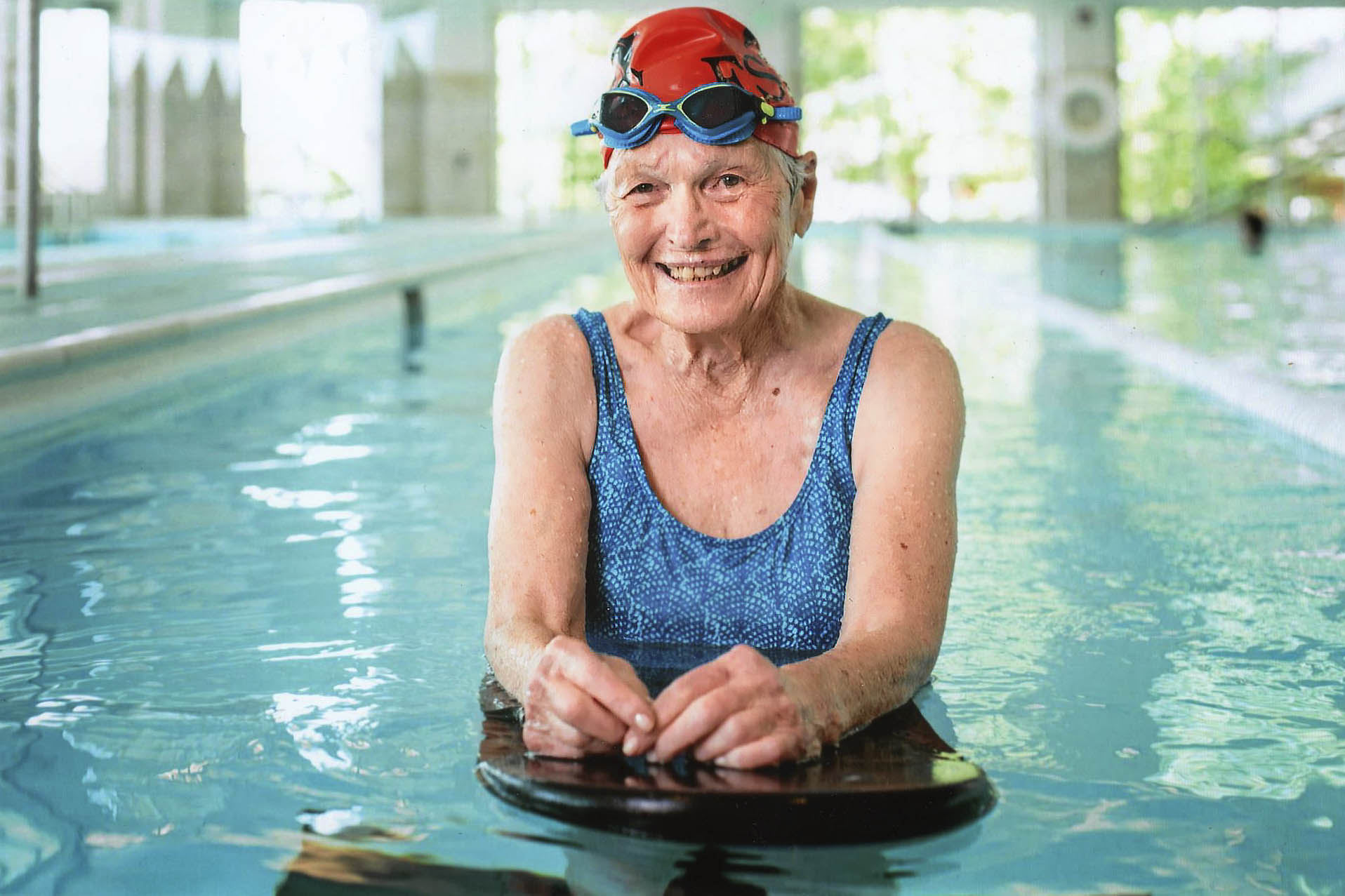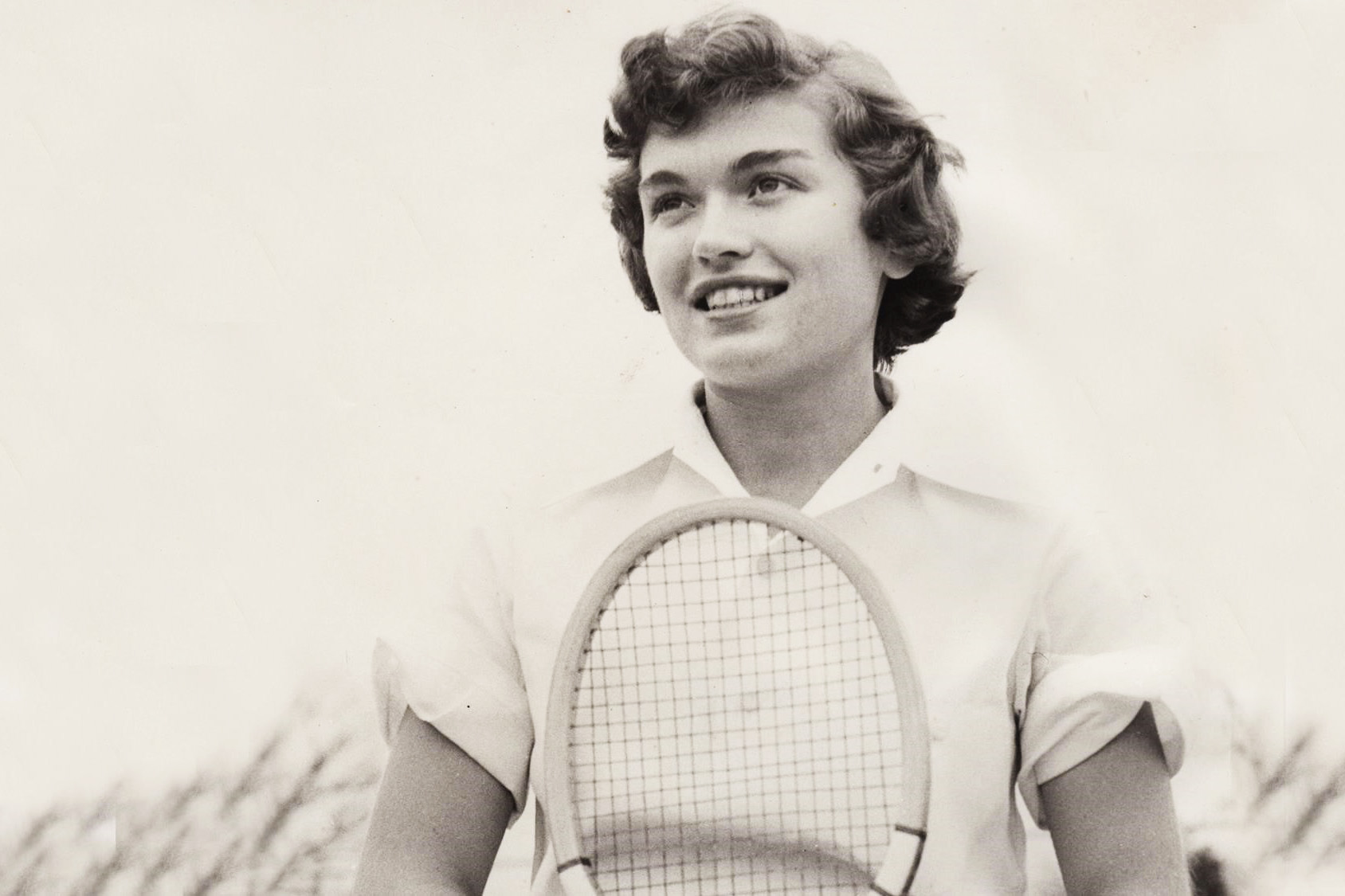In 1954, she played No. 4 in Virginia’s singles lineup. Charlie Jones played No. 5 singles, “and then he and I played doubles together,” Slaughter said. “We were third doubles, and I don’t think we were ever beaten. [The pairing] just worked. It wouldn’t have worked for a lot of men, but he was such a good sport about it.”
Rohmann’s policy, Slaughter said, was that “if we wanted to move up [in the singles lineup], we would challenge the man in front of us. Charlie would always challenge me, and he didn’t win very much. So one day he said he’d like to challenge me, but asked if we could play out at Farmington. I said, ‘Sure, but why do you want to play out at Farmington [Country Club]?’”
Jones had a good reason. From their house on Grounds, his fraternity brothers could easily follow the action at the Snyder courts, “and he said if I beat him again, they weren’t going to let him back in the fraternity,” Slaughter recalled, laughing.
Slaughter was born and raised in Charlottesville. Her father, a former All-American in football at the University of Michigan, came to UVA in 1931 as an assistant coach in that sport. In 1940, he left the football program to join the faculty of the University’s physical education department, which was based in Mem Gym. He became an assistant professor in 1944 and an associate professor in 1950.
Butch Slaughter coached the golf team at UVA and later had another stint as an assistant football coach. In 1982, the Slaughter Recreation Center was named in his honor.
After graduating from what is now UNC-Greensboro, Mary Slaughter took a job teaching physical education at Mount Holyoke College in Massachusetts. In 1958, she enrolled at the University of Illinois, where she earned a master’s degree and then a doctorate in kinesiology. Slaughter became a full professor at Illinois and conducted research at the Big Ten school until she retired and returned to Charlottesville about 15 years ago.
Slaughter, who in her youth had played mixed doubles with UVA tennis legend Hal Burrows, remained active in tennis for years. She regularly returned home to Charlottesville on her breaks and won Virginia state women’s singles titles in 1959, 1961 and 1963. In 1965, she won Illinois state women’s championships in singles and doubles.
“I still continued playing competitive tennis,” Slaughter said, “but it wasn’t every week.”








